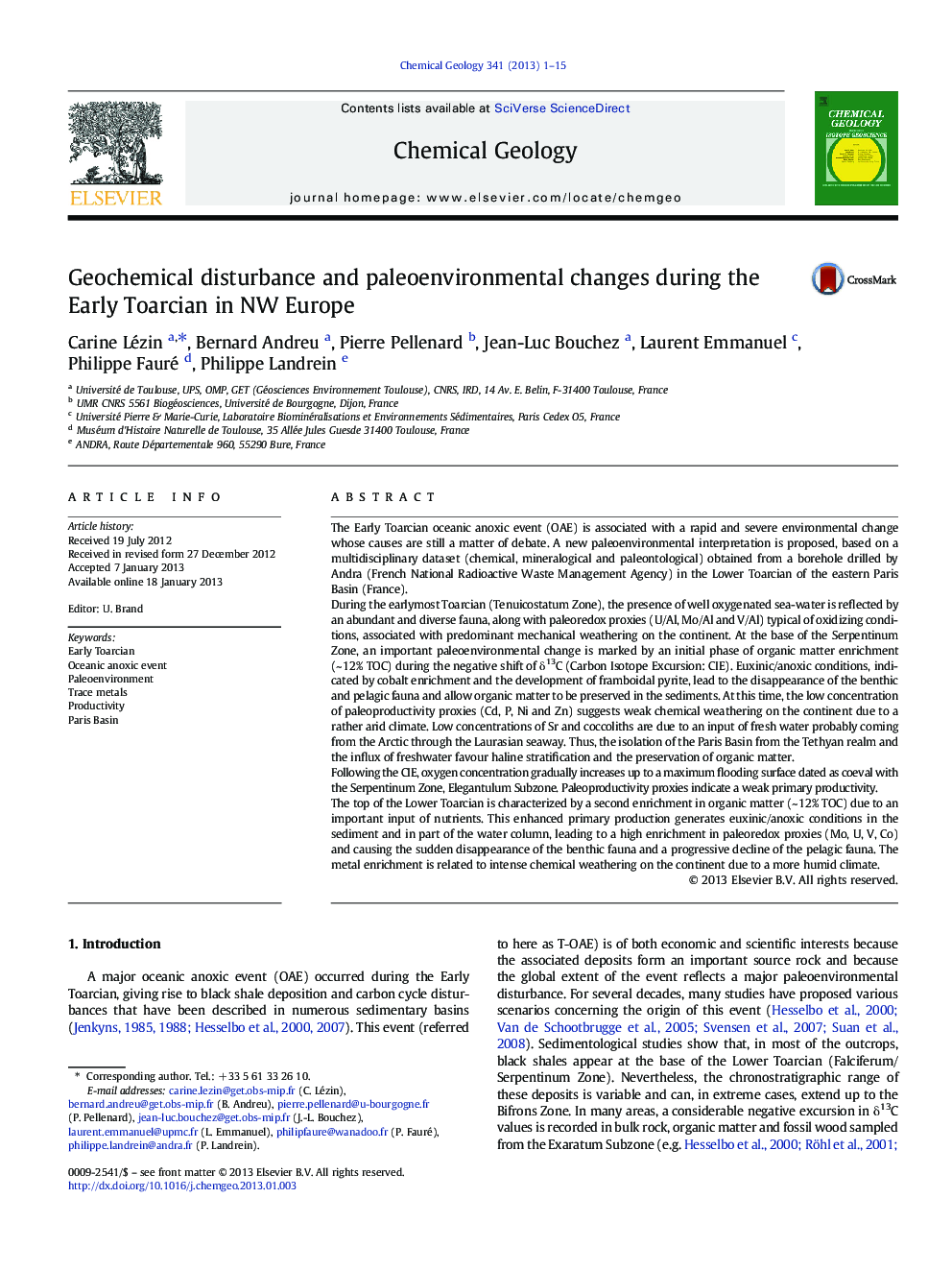| کد مقاله | کد نشریه | سال انتشار | مقاله انگلیسی | نسخه تمام متن |
|---|---|---|---|---|
| 4699039 | 1637627 | 2013 | 15 صفحه PDF | دانلود رایگان |
The Early Toarcian oceanic anoxic event (OAE) is associated with a rapid and severe environmental change whose causes are still a matter of debate. A new paleoenvironmental interpretation is proposed, based on a multidisciplinary dataset (chemical, mineralogical and paleontological) obtained from a borehole drilled by Andra (French National Radioactive Waste Management Agency) in the Lower Toarcian of the eastern Paris Basin (France).During the earlymost Toarcian (Tenuicostatum Zone), the presence of well oxygenated sea-water is reflected by an abundant and diverse fauna, along with paleoredox proxies (U/Al, Mo/Al and V/Al) typical of oxidizing conditions, associated with predominant mechanical weathering on the continent. At the base of the Serpentinum Zone, an important paleoenvironmental change is marked by an initial phase of organic matter enrichment (~ 12% TOC) during the negative shift of δ13C (Carbon Isotope Excursion: CIE). Euxinic/anoxic conditions, indicated by cobalt enrichment and the development of framboidal pyrite, lead to the disappearance of the benthic and pelagic fauna and allow organic matter to be preserved in the sediments. At this time, the low concentration of paleoproductivity proxies (Cd, P, Ni and Zn) suggests weak chemical weathering on the continent due to a rather arid climate. Low concentrations of Sr and coccoliths are due to an input of fresh water probably coming from the Arctic through the Laurasian seaway. Thus, the isolation of the Paris Basin from the Tethyan realm and the influx of freshwater favour haline stratification and the preservation of organic matter.Following the CIE, oxygen concentration gradually increases up to a maximum flooding surface dated as coeval with the Serpentinum Zone, Elegantulum Subzone. Paleoproductivity proxies indicate a weak primary productivity.The top of the Lower Toarcian is characterized by a second enrichment in organic matter (~ 12% TOC) due to an important input of nutrients. This enhanced primary production generates euxinic/anoxic conditions in the sediment and in part of the water column, leading to a high enrichment in paleoredox proxies (Mo, U, V, Co) and causing the sudden disappearance of the benthic fauna and a progressive decline of the pelagic fauna. The metal enrichment is related to intense chemical weathering on the continent due to a more humid climate.
► Chemical disturbance during T-OAE and CIE in NW Europe
► No metal enrichment, low productivity during CIE due to rather dry climate
► Pelagic fauna and flora density controlled by salinity variations during CIE
► Normal oxygenation conditions briefly reappear just after CIE during maximum flooding.
► Metal enrichment, high productivity after CIE due to humid climate after CIE
Journal: Chemical Geology - Volume 341, 11 March 2013, Pages 1–15
